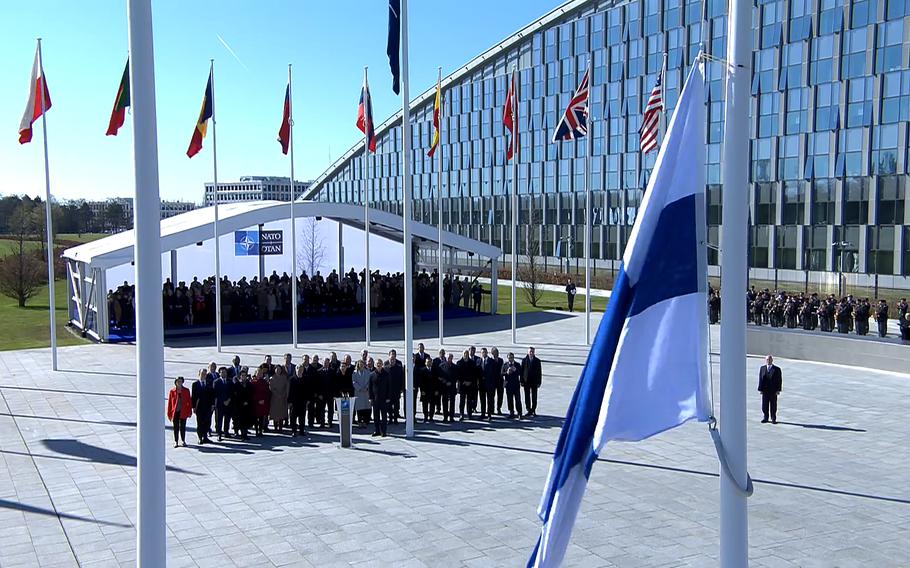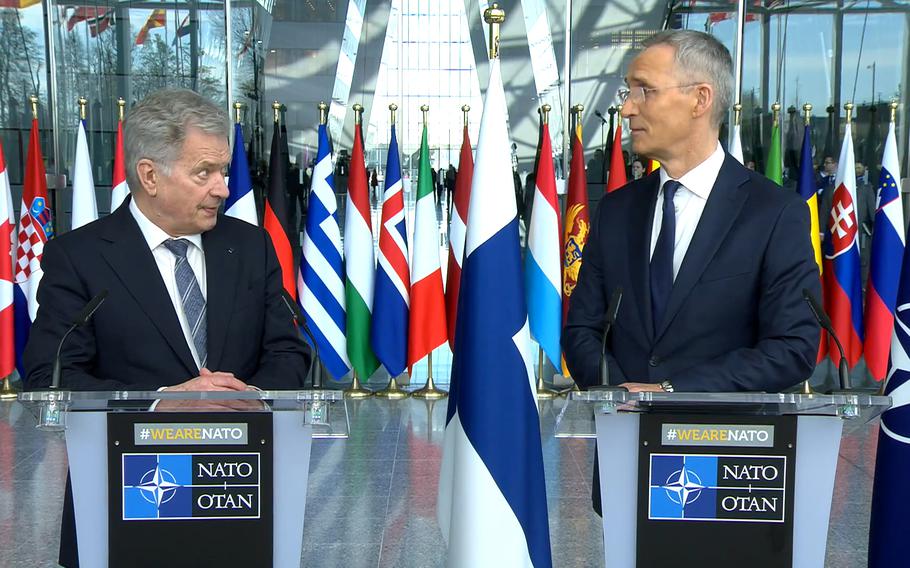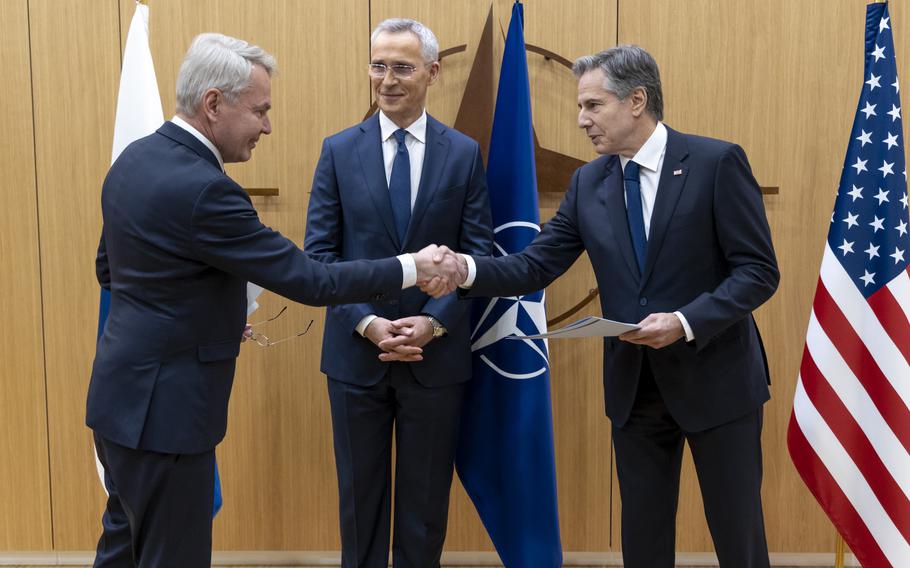
Finland's flag is raised at NATO headquarters in Brussels, April 4, 2023, as the Nordic country becomes the alliance's 31st member. (NATO)
NATO’s eastern flank grew stronger Tuesday as Finland became the alliance’s 31st member, adding military muscle in the Arctic region, where allies say they are now better positioned to check any further Russian aggression.
The accession of Finland, which possesses one of the largest artillery arsenals in Europe and a conscription ground force capable of fielding up to 1 million reservist troops in a crisis, upended decades of military nonalignment for the Nordic state.
“I am tempted to say this is maybe the one thing we can thank Mr. Putin for because he once again precipitated something he claims to want to prevent,” Secretary of State Antony Blinken said Tuesday at NATO headquarters in Brussels.
Russia lashed out after the formal induction.
"The Kremlin believes that this is yet another escalation and that NATO’s expansion is posing a threat to our security and the interests of the Russian Federation,” Kremlin spokesman Dmitry Peskov told Russian reporters Tuesday. “We will take countermeasures to ensure our own security, both tactically and strategically.”
For NATO, Finland’s entry builds upon a relationship that has grown closer over many years.
It was Russia’s invasion of Ukraine last year that became the impetus for Helsinki to join NATO, which it resisted doing throughout the Cold War.

Finnish President Sauli Niinisto, left, and NATO Secretary-General Jens Stoltenberg talk to reporters before the raising of the Finnish flag at NATO headquarters in Brussels, April 4, 2023. Finland became the 31st member of the alliance. (NATO)
Finnish President Sauli Niinisto told those gathered at alliance headquarters that it was a “historic day” for his country, which he said would add to security in Europe.
Russian President Vladimir Putin’s repeated threats and warnings about the perils of joining NATO were part of the rationale for seeking out membership, he said.
“Russia tried to create this fear,” Niinisto said.
For the Kremlin, Finland’s alliance membership amounts to a strategic blow, since it means that NATO just more than doubled its land border with Russia.
NATO Secretary-General Jens Stoltenberg said Putin sought to “slam NATO’s door shut” with his war in Ukraine. But instead of less NATO on his border, Putin now has more, Stoltenberg said.
“He is getting more troop(s), more readiness, more forces, land, sea and air in the eastern part of the alliance,” Stoltenberg said.

Finnish Foreign Minister Pekka Haavisto, left, shakes hands with U.S. Secretary of State Antony Blinken as NATO Secretary-General Jens Stoltenberg looks on, after Finland signed the instrument of accession to NATO at the alliance headquarters in Brussels, April 4, 2023. (NATO)
Up next for NATO is getting Sweden, which aimed to enter the alliance simultaneously with Finland, into the fold. So far, Sweden’s NATO ambitions have been stymied by Turkish opposition.
Stoltenberg said efforts are ongoing to resolve the dispute between Sweden and Turkey. Ankara’s opposition revolves around its position that Sweden has given sanctuary to people it says are Kurdish militants.
While Finland’s accession gives a military boost to the alliance, it’s not likely to cause a dramatic shift in day-to-day military activities, officials said.
Niinisto said collaboration with NATO has increased year after year.
“The change is not that radical. … In daily life I do not believe people (will) see very many changes,” he said.
But he said Finns themselves will feel more secure within the alliance.
“That is most important for us,” Niinisto said.
For now, no senior officials in NATO or Finland have suggested ramping up the number of allied troops in the country, which has happened in other alliance nations, such as the Baltic states, Poland and Romania.
“There will be no NATO troops in Finland without the consent of Finland,” Stoltenberg said.